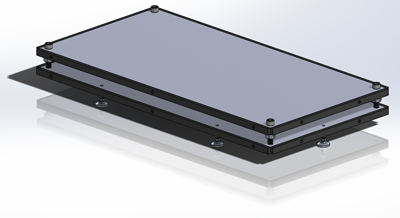How to Leak Test Medical Fluid, Solution, or Blood Bags
Leak testing medical fluid bags (also medical solution or blood bags) can be challenging due to the flexible material and variable sizes on one production line. These factors also make it difficult to keep up with requirements for cycle time and process management.
Typically made from sheets of PVC, EVA or polyolefin, sealed at their perimeter edges, these bags often have tubes or ports exiting the bags interior and sealed between the flat sheets. Testing 100% of bags for leaks is critical for effective operation in the field.
Watch this video to see a CTS turnkey leak test system for medical bag testing in action >
Test Method & Process for Leak Testing Medical Fluid, Solution, or Blood Bags
The most common method used to leak test medical fluid bags is pressure decay with clean and dry compressed air at positive pressures ranging from 0.1 to 30 psig. Due to the complexity of testing these flexible materials, the leak test process must be carefully designed and controlled to ensure accurate test results, following the below steps.
Loading Bags for Testing
The first step in the leak testing process is loading the bag. The bag is placed into a restraining plate fixture (see image for example). The restraining plates are spaced as tightly together as possible to minimize the volume of the pressurized bag and to limit the elastic creep or stretch of the material while under test.

CTS-designed restraining plate
The operator then inserts a connector into each of the bag’s open ports (sealing radially) and mates it to one of the test ports of the leak test instrument, allowing for pressurization and/or sealing of the bag during test. Read the application note to learn more about CTS’ custom connectors designed specifically for this purpose >
Stabilization: Detecting Gross Leaks
The pressure decay test cycle is then set to begin. The test sequence is all automated by the leak test instrument. Once the Fill timer expires, the isolation valve inside the instrument closes, trapping pressure inside the bag for a user-specified Stabilize time. This time is intended to minimize the natural pressure loss of even non-leaking parts due to expansion or creep, adiabatic thermal effect and potentially absorption, increasing the separation of the final measured pressure loss/decay between good parts and rejects.
The pressure is also measured by the instrument’s pressure transducer and compared to min/ max limits to detect slightly smaller but still gross leaks on the bag.
TIP: To shorten the testing cycle, some manufacturers add a Pre-Pressure sequence step, where a second source is used at a slightly elevated pressure—perhaps +10% above the target test pressure, or +1.0 psig. This over-inflates the bag to force it to reach its elastic limit very early in the test cycle, rather than wait for it to occur naturally during the Stabilization step. Read this application note for more tips on leak testing medical solution, fluid, or blood bags >
Detecting Fine Leaks
After the Stabilize timer expires, the pressure transducer is tared and the resulting pressure loss/decay is recorded over a user-defined Test time and compared to min/max pressure limits to determine whether fine leaks are present.
Venting Pressure (Exhaust)
Once the Test timer expires, the pressure trapped inside the bag is vented to atmosphere using a user-defined Exhaust time.
TIP: At the end of most bag tests, a small amount of air is left inside the bag, leaving it slightly inflated. In some cases, it is inflated enough that removing the bag from the restraining plate opening can be difficult. CTS Sentinel instruments equipped with optional vacuum exhaust capability prevent this problem by removing most or all excess air trapped inside the bag. It then becomes as easy to remove as it was to initially load.
View Test Results Data on Leak Test Instrument
After the Exhaust timer expires, the final variable test result data is displayed on the instrument. Highly visible indicators on CTS instruments’ display and front panel make it obvious to the operator which bags have passed or failed, allowing them to disconnect from the Sentinel instrument and properly move the bags down the production line or into reject containers.
Have different sizes of solution bags?
Read the application bulletin for information on how to standardize testing.
See it in action: a CTS Blackbelt Pro integrated into a turnkey pressure leak test system for medical solution bags.

